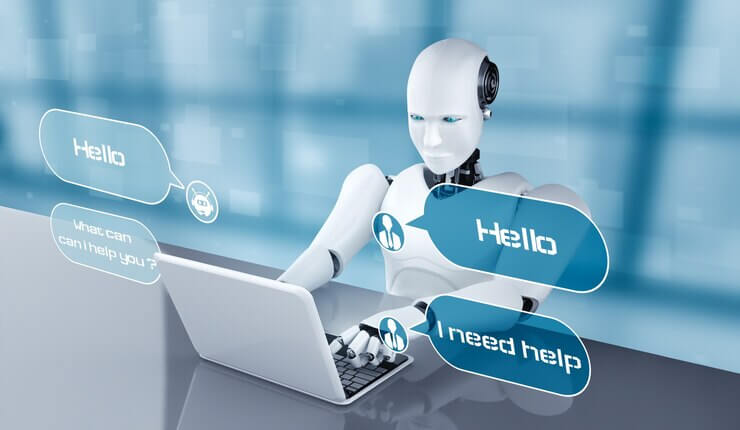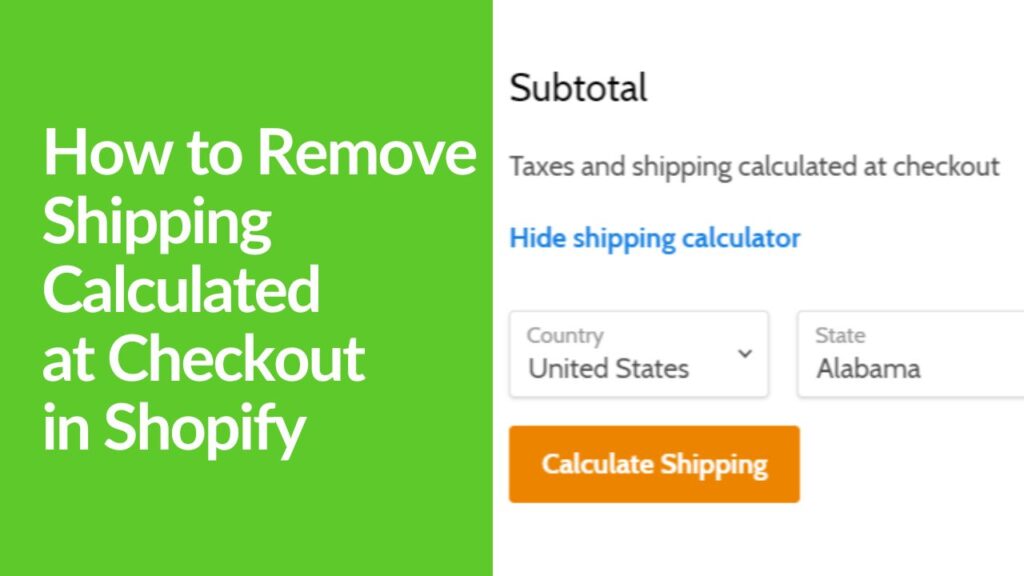Consider entering the realm of digital marketing, where chatbots function similarly to your friendly neighborhood store owners. Picture a world where every potential lead is greeted with the warmth and precision of a personal assistant, capable of guiding them through their purchasing journey any time of day. This isn’t just a vision for the future; it’s the reality that chatbots are creating today.
As businesses navigate the complexities of online marketing, the adoption of chatbots has skyrocketed, driven by their unmatched efficiency in engaging customers, answering queries, and, most importantly, converting leads into sales.
They are more than simply tools; they are key partners in improving the customer journey, using AI to anticipate needs, present options, and swiftly finalize transactions. Chatbots are transforming B2B firms’ audience engagement strategies, from streamlining interactions to offering round-the-clock support, it can be your chatbot e-commerce conversion rate multiplier.
Let’s dive into how integrating chatbots for enhanced conversion rates on your e-commerce site.
The Role of Chatbots in Conversion Rate Optimization
The beauty of chatbots is their ability to revolutionize customer and corporate experiences. In the current era of instant satisfaction and lightning-fast answers, chatbots are at the forefront of technologies, providing visitors with personalized experiences along with quick responses.
Chatbots are becoming super important for online customer service, helping a lot with improving sales through what’s called conversion rate optimization (CRO). By taking over the simple, repetitive tasks, chatbots free up human customer service folks to focus on the more complicated stuff that really needs a human touch. This teamwork makes the whole customer service process more efficient, ensuring questions get answered quickly and well.
One of the coolest things about chatbots is how they can make shopping online feel more personal. They chat with customers, give recommendations based on what you like, answer questions based on your past chats, and help you through the checkout process. Chatbot and conversion rates are basically woven in the same thread because this personalized touch not only makes customers happier but also helps sell more by making shopping easier and more fun for the leads.
Using chatbots saves a lot of money. Instead of hiring more customer service staff and spending money on their training and upkeep, chatbots offer a cheaper option that works all day and night. While there’s an initial cost to get chatbots set up, they end up saving a bunch of money in the long run by cutting down on customer service expenses.
Overall, chatbots are a big help in making conversion rates better. They make things run smoother, make the customer experience more personal, and save money. By taking care of simple tasks and being available 24/7, they let human agents focus on the harder stuff, making sure every interaction with customers is positive and gets stuff done. As businesses look for new ways to make their conversion rates better, chatbots are becoming even more important in the world of digital marketing.
Why Use Chatbots?
Imagine a world where your business operations are as smooth as silk, customer queries are answered in the blink of an eye, and sales conversions happen as if by magic. That’s the power of integrating chatbots into your sales strategy.
- Personalized Customer Interactions: Chatbots can analyze user data to deliver personalized recommendations and messages, making each customer feel unique and understood.
- Streamlining the Sales Process: From initial inquiry to final purchase, chatbots can simplify the buying journey, making it easier and faster for customers to make a decision.
- Gathering Insights from Customer Interactions: Every chatbot conversation is an opportunity to learn more about your customers’ preferences and pain points, allowing you to refine your offerings and marketing strategies.
- 24/7 Availability: Unlike humans, chatbots don’t need sleep. They’re your tireless salespeople, ready to engage customers anytime, which is crucial for capturing those late-night shoppers or international customers in different time zones.
- Personalized Shopping Experience: Chatbots can provide recommendations based on browsing behavior, past purchases, and customer preferences, creating a tailored shopping experience that can significantly boost conversion rates.
- Instant Customer Support: They can answer FAQs, track orders, and resolve common issues instantly. This immediate support helps reduce cart abandonment and enhances customer satisfaction.
A Business that Uses Chatbot
By offering personalized recommendations, simplifying transactions, and enhancing customer engagement, chatbots have become indispensable for businesses looking to thrive in the digital marketplace and e-commerce platforms.
These digital assistants aren’t just about replying to “Hi!” on a website anymore. They’ve become integral to the sales process, guiding customers from curiosity to checkout with remarkable efficiency and that’s only through conversion rate optimization with chatbot. Let’s explore some shining examples of businesses that have harnessed the power of chatbots to revamp their sales journey in the digital marketplace and e-commerce platforms.
Sephora: Beauty and AI, A Match Made in Retail Heaven
Sephora, a leading beauty retailer, has taken the chatbot experience to a whole new level with its virtual artist and beauty advisor. These chatbots, available on their website and through Facebook Messenger, offer personalized makeup tutorials, and product recommendations, and even allow users to try on products virtually. This isn’t just innovative; it’s revolutionizing the way we think about buying beauty products online, making the process interactive, personalized, and a lot more fun.
H&M: Fashion Meets Technology
H&M’s chatbot is like having a personal stylist in your pocket. Available on Kik and Facebook Messenger, this bot asks users about their style preferences and then suggests outfits accordingly. What’s brilliant here is the seamless integration of the chatbot into the sales process. By offering tailored suggestions, the bot not only engages customers but also nudges them closer to making a purchase, all while gathering valuable data on customer preferences.
Domino’s: Pizza at the Tap of a Button
Who knew ordering pizza could get even easier? Domino’s chatbot, Dom, available through its website and Facebook Messenger, takes convenience to the next level. Customers can order their favorite pizza, track their orders, and even repeat past orders without breaking a sweat. This ease of use has not only enhanced customer satisfaction but has also streamlined Domino’s sales process, making it a win-win for both the company and its customers.
Bank of America: Erica, Your Personal Financial Assistant
In the financial sector, Bank of America’s Erica is a prime example of a chatbot designed to streamline complex processes. Erica helps users check balances, suggest saving tips, and even conduct transactions. By simplifying financial management, Erica not only enhances customer engagement but also indirectly boosts sales by promoting the bank’s various financial products tailored to the user’s spending habits and financial status.
Amazon: The Conversational Commerce Giant
Amazon’s Chatbots for Enhanced Conversion Rates technology through Alexa and its customer service bots has significantly enhanced the shopping experience. Alexa allows for shopping through voice commands, providing a hands-free, conversational way to buy products. On the other side, Amazon’s customer service bots offer quick solutions to common issues, freeing up human agents to handle more complex queries. This dual approach ensures a smooth sales process, reducing friction for customers and increasing the likelihood of repeat purchases.
These examples show how Chatbots for enhanced conversion rates are not just a tool for customer service; they’re an integral part of the sales process in the digital age. As technology evolves, we can only expect these digital assistants to become more sophisticated, further revolutionizing the way businesses interact with their customers.
Designing an Effective Chatbot Strategy
Let’s talk about cooking up a great chatbot strategy, kind of like preparing your favorite dish. First off, knowing who you’re cooking for (or who your chatbot is chatting with) is key. You wouldn’t serve steak to a vegetarian, right? Similarly, figuring out your target audience helps tailor your chatbot interactions for a personalized customer experience and maximum efficiency for both chatbot and conversion rates. It’s all about understanding your audience’s tastes and preferences.
Next up, deciding the role of your chatbot and scripting its conversations is like choosing your ingredients and following a recipe. You need to decide what your chatbot will focus on. Will it handle FAQs, help shoppers find products, or provide support? Once you’ve got that sorted, you’ll create a script that suits your audience and the tasks at hand. This script is your recipe for success, answering more on- how do chatbots improve sales conversion rates?

Integrating chatbots with your website and online store is like organizing your kitchen tools and ingredients for easy access. It’s all about giving your customers a seamless experience, so they can chat with your bot without any issues while browsing your site or shopping in your online store. Just like ensuring a smooth flow in the kitchen, from prep to serving.
Lastly, the taste test—testing and optimizing your chatbot interactions. Just like tasting a dish as you cook and adjusting the seasoning, you need to test and tweak your chatbot based on how customers interact with it. This step is crucial for improving conversions. It’s about perfecting the recipe until it’s just right, making sure every interaction leaves customers wanting more.
So, that’s designing an effective chatbot strategy in a nutshell. It’s about knowing your audience, defining your chatbot’s role, seamlessly integrating it into your digital space, and constantly refining the experience. Just like cooking, the secret ingredient is always a bit of love and attention to detail.
Step 1: Define Your Goals
Before you dive into the integration process, it’s crucial to know what you want your chatbot to achieve. Do you want it to assist in customer service, drive sales, or provide personalized recommendations? Having clear goals will help in designing your chatbot to serve your specific needs.
Step 2: Choose the Right Platform
There are several chatbot platforms out there, each with its unique features and capabilities. Some are designed specifically for e-commerce. Look for one that aligns with your goals, is compatible with your e-commerce platform, and offers customization options.
Step 3: Design the Chatbot Experience
This is where the fun begins! Design your chatbot’s conversation flow in a way that feels natural and helpful. Think about the typical customer queries and how your bot can provide value. Make sure to include welcoming messages, product recommendations, and support options. Keep the conversation light-hearted and friendly to enhance the user experience.
Step 4: Integrate with Your E-Commerce Platform
Most chatbot platforms offer easy integration with popular e-commerce platforms like Shopify, Magento, or WooCommerce. This step usually involves adding a plugin or a piece of code to your website. Follow the platform’s guide carefully to ensure a smooth integration.
Best Practices and Strategies
This integration phase is where you make sure your chatbot is well-fitted into your website’s ecosystem. It’s about ensuring that your chatbot is not just a standalone feature but an integral part of your customer service team.
- Keep It Simple: Start with simple functionalities and gradually add more complex features based on user feedback and needs.
- Personalize the Experience: Use customer data to personalize the conversation. Addressing customers by name or suggesting products based on their browsing history can make a big difference.
- Ensure a Seamless Handoff: Your chatbot won’t be able to handle all queries. Make sure there’s an easy option for customers to reach a human agent when needed.
- Test and Optimize: Launching your chatbot is just the beginning. Continuously test and analyze its performance. Look for ways to improve the conversation flow and increase engagement.
- Promote Your Chatbot: Let your customers know about your new digital assistant. You can promote it through your website, email newsletters, or social media channels.
- Stay Compliant: Ensure your chatbot complies with data protection regulations. Be transparent about how you use customer data and provide options for users to opt-out if they wish.
Build and Train Your Bot
So, you’re ready to dive into the chatbot pool—exciting times ahead! Building and training your bot is like nurturing a digital plant; it needs attention, care, and the right environment to thrive. Start by sketching out the types of conversations your bot will have. Will it help shoppers find the perfect product, or will it assist with customer service queries? Think of it as teaching your bot the language of your brand and your customers.
Once you’ve mapped out the conversations, it’s time to train your bot. This involves feeding it examples of how to respond to various customer inquiries and actions. It’s a bit like training a puppy – patience and consistent reinforcement are key.
Remember, the goal is to make interactions as natural and helpful as possible. Use feedback from real interactions to fine-tune your bot’s responses. And hey, don’t forget to give your bot a bit of personality! A dash of humor or a friendly tone can make your digital assistant more engaging and bring chatbot and conversion rates to a balance.
Personalizing the Chatbot Experience for Maximum Impact
Imagine walking into your favorite coffee shop, where the barista knows your name, remembers your regular order, and even suggests a new pastry you might like. That’s the kind of personalized experience we’re aiming for with chatbots in the digital and mobile world. By using customer data effectively, chatbots can greet customers by name, making everyone feel like a VIP from the get-go. But it doesn’t stop there. They can also make product recommendations that hit the mark because they’re based on each customer’s previous interactions, purchases, and preferences.
Now, the secret sauce to a stellar chatbot experience? A conversational interface and multiple touchpoints. Think of it as having a friendly chat with a buddy. The chatbot should be able to keep the conversation flowing naturally, using a tone that’s friendly and engaging. And because everyone has their own preferred way of communicating, offering multiple touchpoints is like being where your friends are, whether that’s on social media, via email, or right there on your website.
Here’s where it gets really sci-fi cool: machine learning algorithms. These clever bits of tech allow your chatbot to become a learning whiz kid, picking up on patterns in customer interactions and adapting over time. So, if it notices that a customer often asks about product features before making a purchase, it can start highlighting those features during future chats with similar customers. It’s like the chatbot evolves and grows smarter with each conversation, ensuring that the customer experience gets better and more personalized over time.
In a nutshell, personalizing the chatbot experience isn’t just about throwing technology at your customers. It’s about creating a genuinely engaging, helpful, and adaptive service that feels as natural as chatting with a friend. By leveraging customer data, focusing on conversational interfaces, providing multiple touchpoints, and employing machine learning, you can ensure your chatbot makes a maximum impact, turning casual visitors into loyal customers.
Measuring and Tracking the Success of Chatbot Initiatives
Think of measuring and tracking the success of your chatbot initiatives like being a detective on the case. You’ve got your magnifying glass out, and you’re looking for clues in the form of key metrics such as conversion rates, customer satisfaction, and engagement. These metrics are your bread and butter because they tell you if your chatbot is the super sleuth you need or if it’s missing clues.
Conversion rates are like the footprints at the scene—how many visitors is your chatbot turning into customers? Then there’s customer satisfaction, which is all about how happy people are after they chat with your bot. Are they leaving with a smile, or is there a frown because something’s amiss? Engagement is another biggie—it’s about how much and how often people interact with your chatbot. Are they just saying “Hi” and bouncing, or are they sticking around for a meaningful conversation?
The thing is, this detective work is never done. You’ve got to continuously monitor and analyze your chatbot’s performance. It’s like keeping an eye on the suspects and witnesses, making sure you’re always one step ahead. This ongoing improvement is key because it helps you tweak and fine-tune your chatbot, ensuring it’s always on top of its game.
Best Practices for Optimizing Chatbots
Now, onto the best practices for optimizing chatbots for conversion rate optimization. Picture your chatbot as a concierge at a fancy hotel. You want to personalize the experience for each guest, right? So, your chatbot should do the same—use data to offer tailored recommendations and responses. And just like a concierge’s desk should be easy to find and use, keep your chatbot’s interface simple and intuitive.
Offering multiple touchpoints is like having concierges available in different parts of the hotel—let customers choose how and where they want to interact with your chatbot, be it on your website, social media, or via email. And, just like a good hotel constantly evaluates and trains its staff, continuously monitor and optimize your chatbot’s performance. This ensures that your chatbot, like a top-notch concierge, is always providing the best possible service to your customers.
In essence, keeping tabs on key metrics, continuously refining your strategy, personalizing interactions, simplifying your chatbot’s interface, and offering multiple touchpoints are all crucial steps in making your chatbot a conversion-boosting superstar. Just like in detective work or hotel management, the devil is in the details, and constant vigilance is the key to success.
The Future of Chatbots in E-commerce
Peering into the crystal ball to forecast the future of chatbots in e-commerce, we’re on the brink of some pretty exciting advancements. Think about chatbots getting a turbo boost in AI capabilities, making them even smarter and more intuitive. This isn’t just about responding to queries; it’s about chatbots understanding the nuances of human emotions and responding accordingly.
Now, let’s add voice assistants to the mix. Imagine chatting with a bot as easily as calling out to your smart speaker. This integration means you could be cooking dinner and simultaneously asking a chatbot to find you the best deals on sneakers. It’s the convenience factor that has taken up several notches.
But as chatbots become more ingrained in our daily shopping routines, their use cases expand. From personal shopping assistants to proactive customer support agents, the roles of chatbots are diversifying. And with great power comes great responsibility — specifically, the responsibility to protect user privacy and ensure data security. As chatbots handle more sensitive tasks, the focus on safeguarding user information is more critical than ever.
The Bottom Line
Integrating chatbots into your e-commerce site isn’t just about automating customer service; it’s about creating a more dynamic, personalized, and efficient shopping experience that can significantly enhance conversion rates. By leveraging the power of chatbots, you’re not just keeping up with the digital trends but setting your brand apart in the competitive e-commerce landscape.
Ready to Transform Your E-Commerce Experience?
Consider integrating a chatbot on your site today. The future of e-commerce is conversational, and the time to adapt is now. Dive in, explore the possibilities, and watch your conversion rates soar!
Let’s Chat!
Frequently Asked Questions (FAQs)
How do chatbots improve customer service?
Chatbots offer instant responses to inquiries, ensuring customers receive assistance anytime, thereby improving overall satisfaction.
Can chatbots actually increase sales?
Yes, by qualifying leads and providing personalized service, chatbots can significantly increase conversion rates and sales.
Are chatbots difficult to integrate into existing systems?
Integration can vary, but modern platforms offer seamless chatbot integration with existing systems, making it easier for businesses.
How do chatbots understand and respond to different queries?
Chatbots use AI, machine learning, and natural language processing to interpret queries and deliver appropriate responses.
Can chatbots replace human customer service?
While chatbots can handle many customer service tasks, they complement rather than replace human interaction, especially for complex issues.
Can chatbots actually increase sales?
Yes, by providing personalized recommendations and simplifying the sales process, chatbots can significantly increase conversion rates and drive sales.
What should I consider when choosing a chatbot platform?
Look for platforms that offer the necessary integration capabilities, customization options, and support for your business needs.




